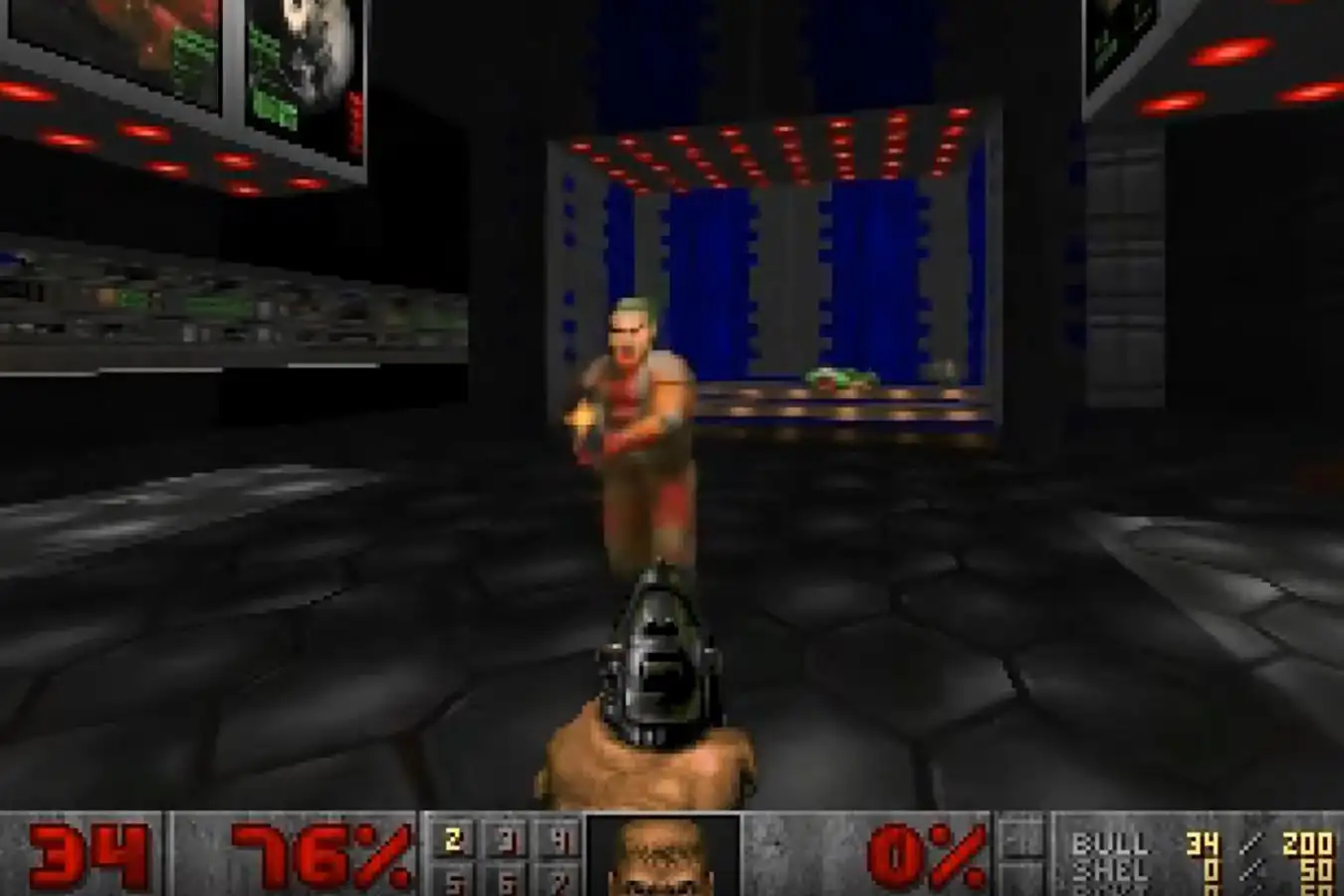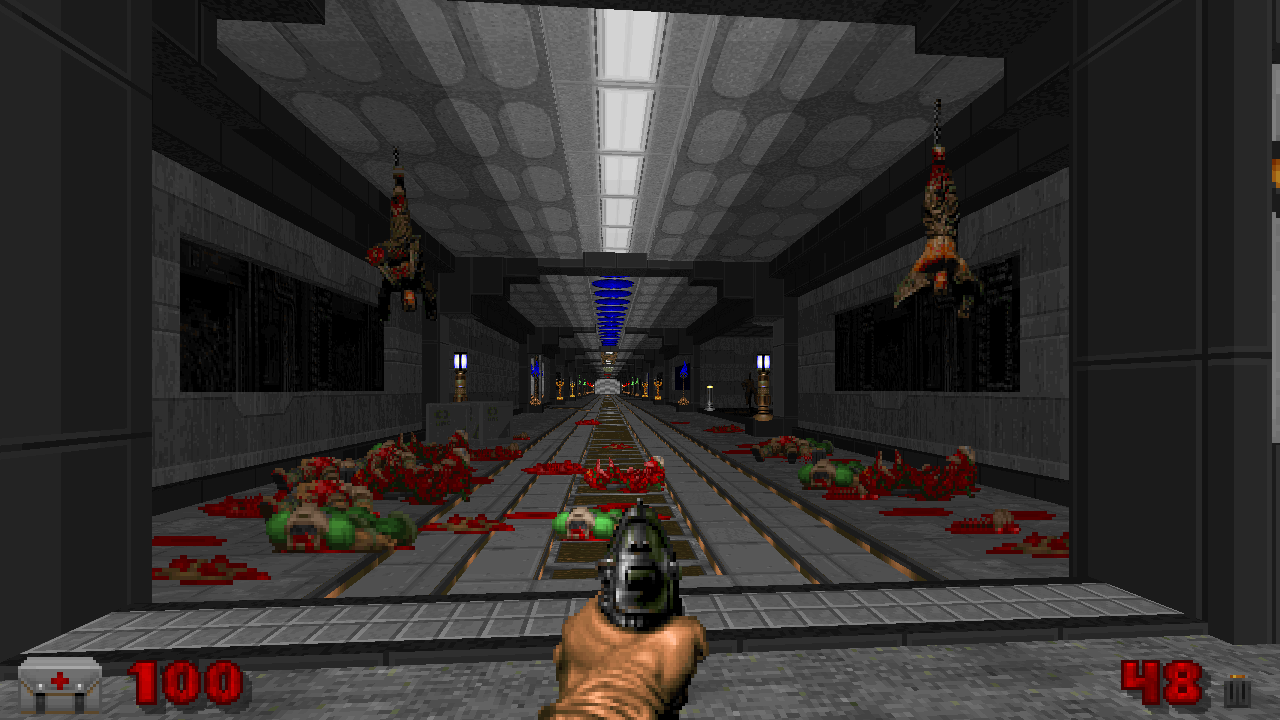The AI DOOM Game: A Revolutionary Leap in Gaming Technology



The AI DOOM game represents a groundbreaking advancement in gaming, being the first video game entirely generated by AI in real-time using advanced neural networks. This innovative project, a collaboration among Google Research, Tel Aviv University, and Google DeepMind, marks a significant leap forward in leveraging artificial intelligence for interactive entertainment.

What is the AI DOOM Game?
At its core, the AI DOOM game reimagines the classic 1993 first-person shooter, DOOM. Unlike traditional versions that rely on pre-coded game logic and assets, the AI DOOM game is driven by an AI model called GameNGen. This model dynamically generates each frame, responding to player inputs and crafting the game environment in real time.

Key Features
The AI DOOM game introduces a range of innovative features that set it apart from traditional video games. By utilizing cutting-edge AI technology, the game offers a unique and immersive experience that evolves with each player's actions. Here are some key features that make the AI DOOM game a revolutionary leap in gaming technology:
Real-Time Frame Generation
GameNGen employs a custom diffusion model, trained with reinforcement learning, to generate game frames as the player interacts with the game. This ensures that every visual element is a result of AI processing and prediction, rather than relying on pre-rendered graphics. The model operates at over 20 frames per second (FPS) on a single Tensor Processing Unit (TPU), with the potential to reach up to 50 FPS when quality is reduced.
Dynamic Environment
The AI DOOM game distinguishes itself by offering a dynamic world that evolves based on player actions. This feature introduces unpredictability and realism, ensuring that each playthrough is unique and engaging.
Visual Consistency
Maintaining consistency across frames is a significant challenge in AI-generated content. GameNGen addresses this by conditioning the generation of each frame on the sequence of past frames and user actions, resulting in a smooth and coherent visual output that enhances the gaming experience.
Low Distinguishability from Original
In various tests, human raters found it challenging to distinguish between short clips of the AI-generated game and the original DOOM gameplay. This difficulty highlights the impressive fidelity of GameNGen’s output, demonstrating its capability to closely mimic the original game's visual style.
The Technology Behind AI DOOM
The AI DOOM game leverages cutting-edge technology through a two-phase training process that enables real-time interaction with its complex environment.
Reinforcement Learning (RL) Agent
Initially, the game utilizes a Reinforcement Learning agent that is rigorously trained to master the gameplay of DOOM. This phase is crucial as it generates a comprehensive dataset of gameplay sequences, which serves as the backbone for the subsequent model training.
Diffusion Model
Following the RL training, the game employs an advanced diffusion model, an enhanced version of the Stable Diffusion v1.4 architecture. This model is tasked with predicting and rendering the next frame in the game, conditioned on the sequence of previous frames and player actions. This approach allows the game to maintain high visual fidelity and dynamic responsiveness, creating an immersive experience that closely mimics the original game's aesthetics. The model's ability to generate frames autoregressively ensures stability over long gameplay sessions, providing a seamless and engaging experience for players.
Challenges and Limitations
Despite its revolutionary capabilities, the AI DOOM game faces several challenges:
Memory Constraints
The current model can only store a limited amount of gameplay data, restricting the complexity of the generated environment and potentially leading to inconsistencies or “hallucinations” in the game world.
Performance
While 20 FPS is acceptable for experimental purposes, it falls short of the 60+ FPS expected in modern gaming. Achieving higher performance often requires sacrificing visual quality.
Future Implications
The AI DOOM game is more than just a technological curiosity; it represents the future of game development and AI's role in content creation. As AI models continue to evolve, they could eventually take on more complex tasks in game design, such as creating entirely new game mechanics, stories, and worlds on demand.
Beyond gaming, this technology could extend to other forms of media, offering personalized experiences in movies, TV shows, and virtual reality. The AI DOOM game is just the beginning of what could be a transformative era for digital content creation.
Conclusion
The AI DOOM game showcases the immense potential of AI in redefining the boundaries of interactive entertainment. By combining advanced neural networks with real-time game simulation, this project points to a future where AI could be the primary driver of creative media, offering experiences that are not only visually stunning but also deeply personalized and dynamic.
As the technology matures, we can expect AI-generated games and media to become more common, pushing the limits of what is possible in the digital world.